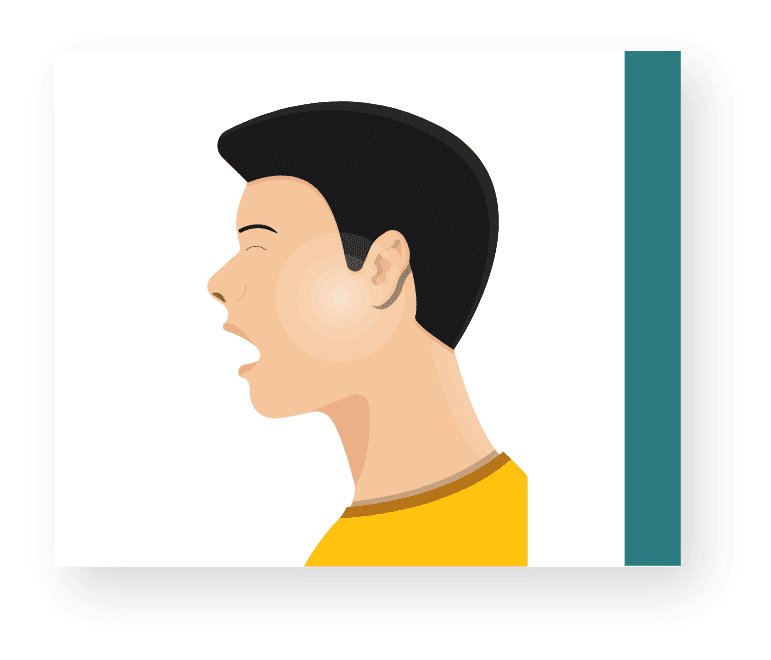Jaw dysfunction treatment options
You've got options. Doctors typically start by recommending treatment to reduce pain and get you back on track without surgery. But sometimes, that’s just not enough. Your doctor can help guide you through your treatment choices.

Treatment without surgery
Physical therapy, change in diet, over-the-counter medication, and relaxation techniques. 6, 7, 8
Learn more
Surgical treatment
TMJ replacement has come a long way in the past decades. There are a couple of options that your doctor may recommend depending on what’s needed.
Arthrocentesis
Using a thin needle your surgeon will irrigate your joint to remove debris and/or reduce inflammation and pressure. 3,6,7,8
Arthroscopy
A small camera and tube is inserted into your Temporomandibular joint to help diagnose or operate on joint issues. 8 This procedure can show problems like torn discs, disc displacement, or damage to surface area. 6,8, 9,10
Total Joint replacement
Learn moreReferences:
- TMJ Concepts Sterile Implant IFU
- TMJ Patient Brochure
- ASTMJS Website- TMD General information. https://astmjs.org/tmd-general-information/ Accessed 08/06/2023
- Cleveland Clinic- Temporomandibular Joint (TMJ) Disorders https://my.clevelandclinic.org/health/diseases/15066-temporomandibular-disorders-tmd-overview Accessed 08/07/2023
- National Institute of Dental and Craniofacial Research- TMD https://www.nidcr.nih.gov/health-info/tmd#symptoms Accessed 08/07/2023
- Mayo Clinic- TMJ Disorders https://www.mayoclinic.org/diseases-conditions/tmj/diagnosis-treatment/drc-20350945 Accessed 08/07/2023
- Wright EF, North SL, et al. Management and Treatment of Temporomandibular Disorders: A Clinical Perspective. National Library of Medicine. 2009; 17(4): 247–254. Accessed 08/06/2023
- Health Direct- TMJ Arthroscopy https://www.healthdirect.gov.au/surgery/tmj-arthroscopy#:~:text=relevant%20health%20professional.-,What%20is%20a%20TMJ%20arthroscopy%3F,the%20surface%20of%20the%20joint. Accessed 08/07/2023
Potential risks of the procedure
Adverse events include worsening of TMJ symptoms, operative difficulties, chronic or reoccuring swelling, jaw muscle spasms, temporary and/or permanent facial muscle weakness, temporary and/or permanent numbness, temporary and/or permanent hearing loss, dental malocclusion, dislocation of implant components, resorption of the glenoid fossa or mandible, perforation or dehiscence of surrounding tissue, allergic reaction, post-operative pain, swelling, bruising, jaw muscle spasm, hematoma formation, and nerve pain.
Please see Instructions for Use (IFU) for a complete listing of warnings, precautions, and adverse events. 1, 2
Disclaimer
The information presented is for educational purposes only. Stryker is not dispensing medical advice. Please speak to your doctor to decide what course of treatment is right for you. Only your doctor can make the medical judgement regarding which products and treatments are right for you. Any medical procedure carries certain risks, and your doctor will explain all possible complications and/or side effects. Not all patients will experience the same results.
Stryker Corporation or its other divisions or other corporate affiliated entities own, use or have applied for the following trademarks or service marks: Stryker. All other trademarks are trademarks of their respective owners or holders.
CRAN-TMJ-PTNT-763104_REV-2_en_us